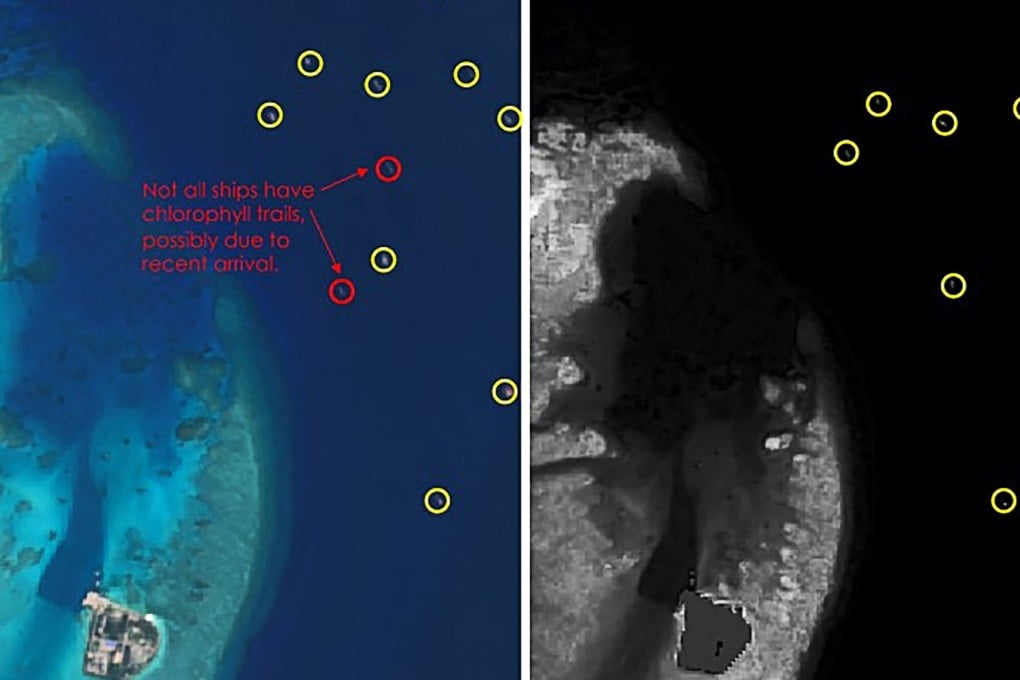Advertisement
Do South China Sea waste claims pass the smell test?
- A US firm claims that Chinese ships moored at a disputed reef were dumping tonnes of human waste into the waters and killing coral reefs
- But some scientists say there is no scientific evidence to support the allegations, which are based on an analysis of satellite images
Reading Time:4 minutes
Why you can trust SCMP
60

A report claiming that Chinese fishing vessels are dumping their human waste into disputed waters has highlighted an unusual environmental dimension to Beijing’s dispute with the Philippines and other countries over the South China Sea.
However, some have questioned the accuracy of the analysis by the US AI software company Simularity, which was based on satellite imagery and is not peer-reviewed.
The report said that more than 200 Chinese vessels moored off the Union Banks, an atoll contested by Beijing and Manila, are killing off coral reefs essential to the South China Sea’s ecosystem by dumping tonnes of sewage.
Advertisement
Simularity ran around 100 satellite images taken from the European Space Agency through AI-driven geospatial analysis software and concluded that the images showed how algal blooms that can be deadly for coral reefs had grown around the areas where Chinese vessels had been mooring since 2016.
The report concluded that this was most likely due to human waste being dumped into the surrounding waters.
Advertisement
Chinese foreign ministry spokesman Zhao Lijian dismissed the report as a serious defamation against China.
Advertisement
Select Voice
Choose your listening speed
Get through articles 2x faster
1.25x
250 WPM
Slow
Average
Fast
1.25x